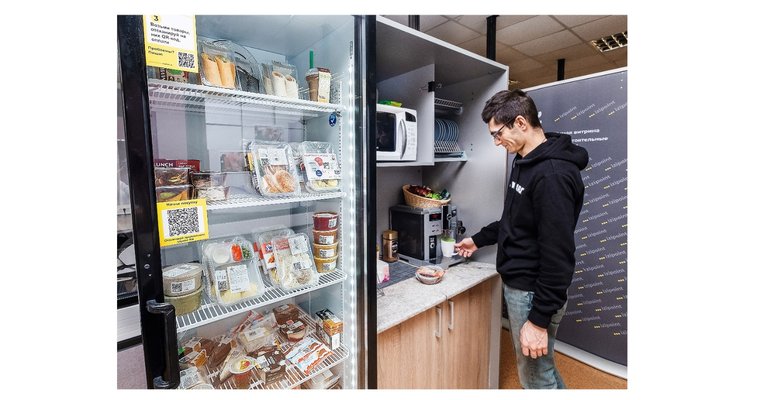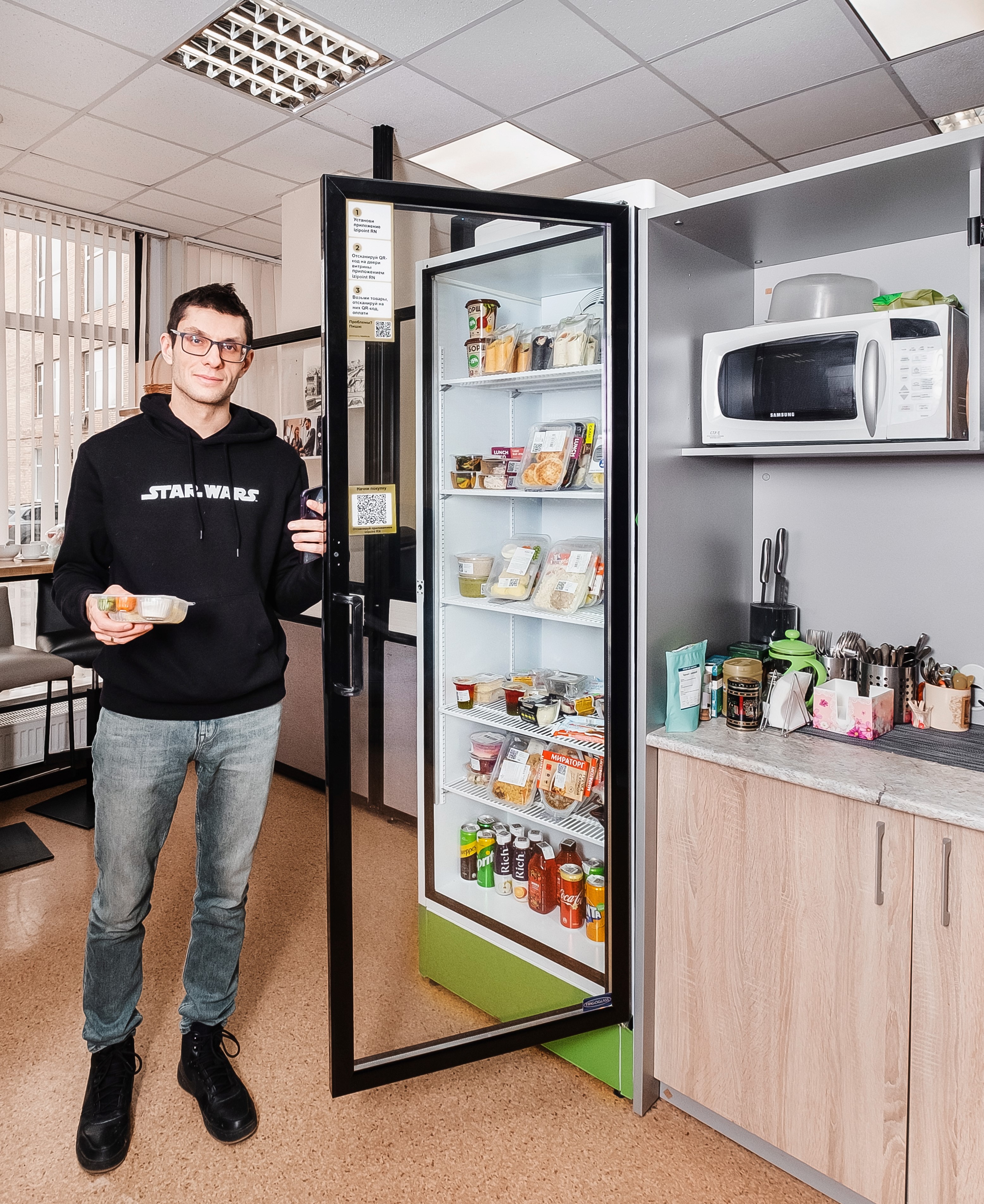 Photo courtesy of Izipoint.
Photo courtesy of Izipoint.
Micro markets have been available for more than a decade, but they have been expanding rapidly in the past year as automation in general has gained greater public acceptance. Micro markets are autonomous points of sale that work 24/7 and require no employees and can offer precooked meals, drinks, snacks and even essential non-food items.
Offered in combination with mobile customer apps, micro markets are easier than ever for customers to use and for operators to manage.
Our company has specialized in micro markets and has launched 40 with more on the way. Our experience has given us some insights in this exciting technology that we have decided to share with other convenience services operators.
Where to place a micro market
Micro markets can be a very successful tool for serving employees and visitors at a business, but locations should have a minimum of 80 people to be profitable.
Office buildings are the most successful locations, but micro markets are also successful in coworking centers, hostels, fitness centers and multifamily residential complexes.
 |
Micro markets can offer any combination of fridges, freezers, ambient cabinets and automated coffee machines. |
Based on the number of customers at a location, micro markets can offer any combination of fridges, freezers, ambient cabinets and automated coffee machines.
More important than the hardware, however, is the software that will support the customer engagement, the transactions and monitoring the micro market’s activity.
The software should support mobile apps that customers can download to their mobile phones. These apps can support «scan and go» technology that allows the customer to select and pay for their purchase using their mobile phone.
The app that our company uses also includes a map that allows the user to find the closest micro market.
Our customer app also offers a checkout cart, push notifications and a customer newsletter.
The app is easy to use, but it does take some time on the customer’s part.
The purchase process
The customer purchase process includes these steps:
1. Open the app and scan the QR code on the cabinet, fridge or freezer. Scanning the code opens the doors of the cabinets, fridges and freezers.
2. The customer scans the code(s) of the item(s) they would like to purchase. The purchases will appear in the cart.
3. When everything is in the cart, the customer closes the doors of the containers and pays for their purchases using the app.
How long does it take to adapt?
According to our experience, customers need about two weeks to become used to the purchase process.
To ease their first contact, we suggest holding promotional events. These can include having an employee in the vicinity to help the customers.
Our company offers a 24/7 hotline that allows the patrons to contact our staff for help using the micro market.
Once they become used to it, customers will patronize the micro market regularly. They will choose the micro market over nearby shops or home-made meals.
Users are instructed to create accounts for themselves on the app. This allows us to collect their information about their buying habits.
It is important that the assortment of products matches customers’ needs and preferences. Software can help analyze customer buying habits to assist in product selection.
Our enterprise resource planning software includes product accounting, sales analytics, marketing and monitoring telemetry sensors.
How to promote your goods and attract customers
Enterprise resource planning software makes it possible to set discounts and promotions to improve sales. We are able to set discounts based on percentages for specific durations.
Our promos are similar to those used by retail shops:
- Purchase two products from the discount list and get a discount on the entire check.
- Purchase one item and get a discount on the second one.
- Buy a drink and get a 10% off a chocolate bar!
How to analyze efficiency
The ERP also allows us to monitor product sales and the percentage of sales for each payment kiosk. You can track the efficiency of every micro market and adjust the goods to your customers’ needs.
Our experience shows that monitoring sales can allow you to increase customer retention by 75% to 80%. That, in return, increases the revenue.
We found that 30% of customers make a purchase on the first day. In the first week 20% become regular customers. It takes one month for every customer to make at least one purchase. After this period, we suggest implementing more promotions via the app.
Safety measures
We also have video surveillance of all our hardware in the micro market.
The hotline is alerted to address various issues with the micro market hardware. The telemetry monitors the sensors on the equipment for malfunctions and sends a message to our tech support which is on call 24/7.
If, for instance, a machine cabinet is opened but no payment is made, the CCTV camera sends a recording to the hotline team. The hotline team sends the customer a reminder to pay for their purchase. In the case of theft, the amount is traceable to the specific theft and can be recorded as a loss. The hotline reduces losses from non-payment.
Customers are also able to message the hotline using the app and receive a response from the hotline team.
In our experience, it takes three to four months to get a payback on the investment in a micro market.
It is possible to launch a micro market business all by yourself. However, we recommend getting professional advice.
Photos courtesy of Izipoint.

